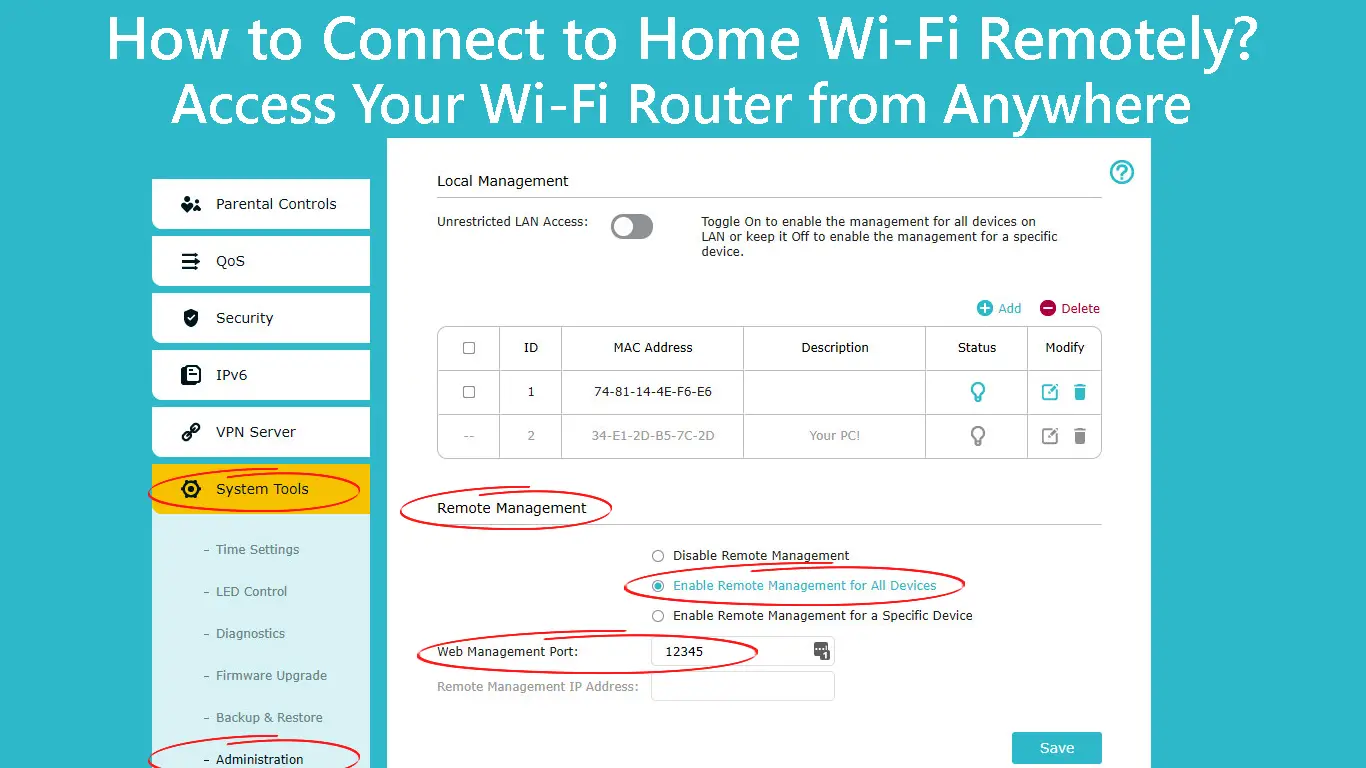Wi-Fi technology has developed rapidly, and you can now connect to your wireless network even if you are far from home.
You do not require special equipment, software, or tools to connect to your home Wi-Fi remotely.
You can connect to your network from anywhere so long as you know your router’s private and public IP addresses and the default port number.
Keep reading to find out how to go about it.
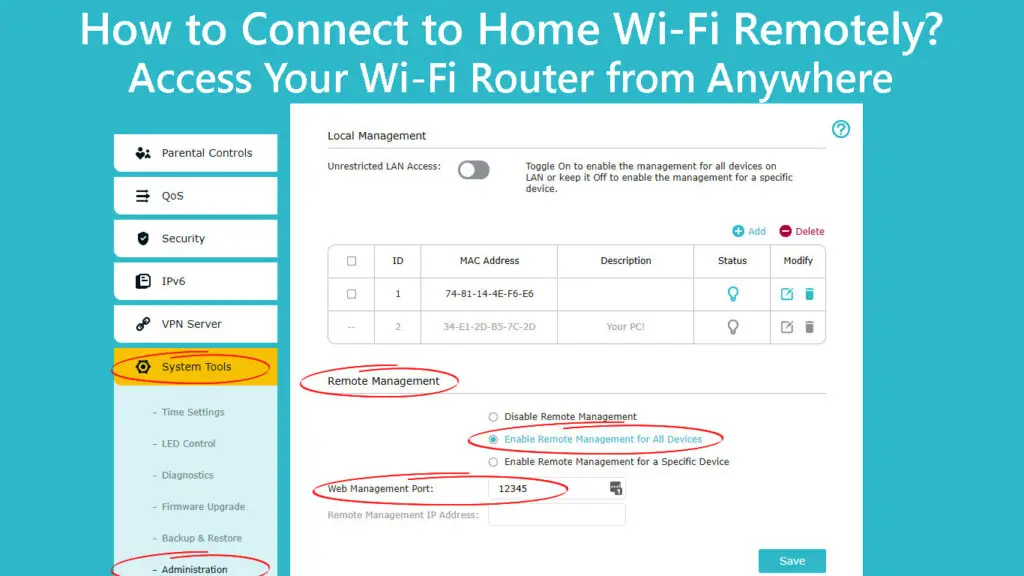
CONTENTS
Finding the Wi-Fi Router’s Private and Public IP Addresses
Wi-Fi routers have two IP addresses, including a private and public IP address, assigned by the manufacturer and Internet Service Provider (ISP).
The Wi-Fi router requires a public IP address from the ISP to establish an internet connection.
Conversely, the router requires a private IP address to establish a connection with all devices within the same Wi-Fi network.
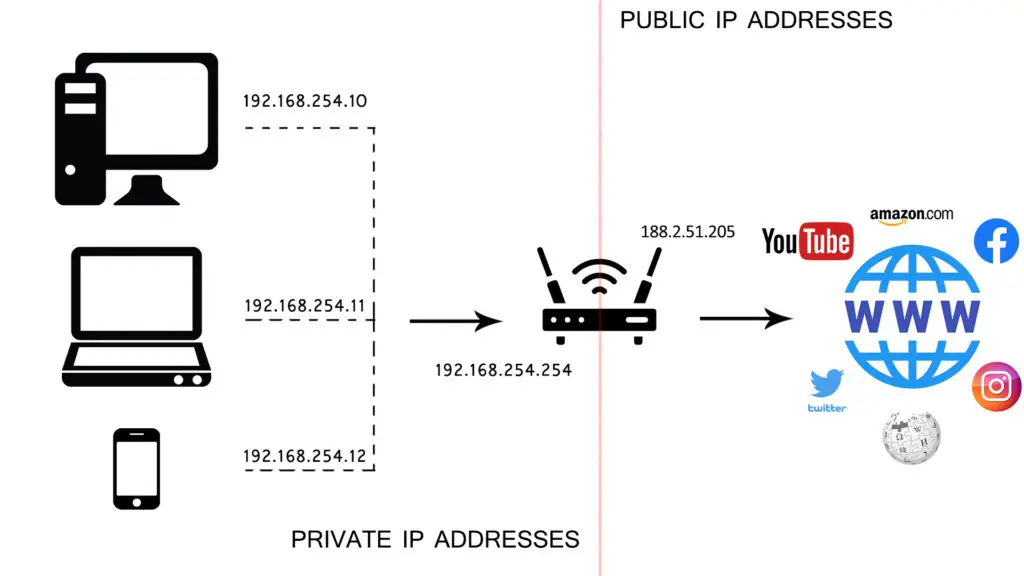
You need to know your router’s private IP address to access its web-based administrative control panel to enable remote access, change network settings, and view other important info.
The private IP address is usually on the label at the back of the router, and the most common addresses include:
- 10.0.1.1
Alternatively, you can find your private IP address using your phone or computer.
Here are the steps to find your private IP address using a Windows computer:
- Press the Windows key and type CMD
- Run Cmd Prompt as an Administrator
- From the Command Prompt window, enter the command IPCONFIG
- Press the return key [enter key]
- Find your router’s private IP address next to Default Gateway
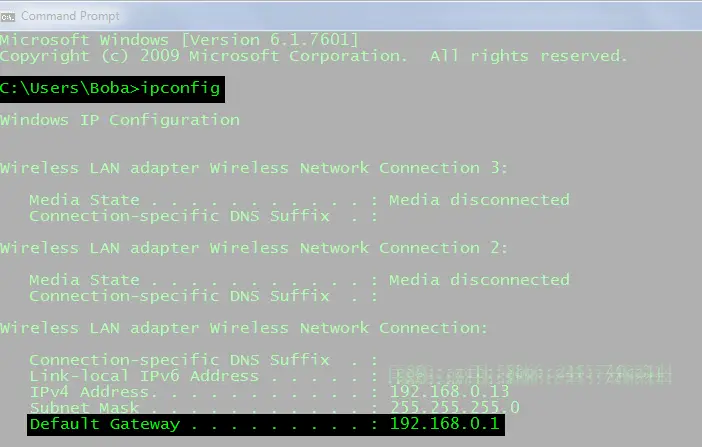
Follow these steps to check your router’s private IP address using an Android phone:
- Tap the Settings app
- Go to Network & Internet
- Tap Wi-Fi to connect to your home network
- Tap your home network name
- Check your router’s IP address under Network Details
Here are the steps to find your router’s private IP address using an iOS device:
- Tap the Settings app
- Go to Wi-Fi and connect to your home network
- Tap the ‘i” next to your network name to view your connection details
- Check your router’s private IP address next IPv4
Find Your IP Address on an iPhone (Private and Public)
Once you know your router’s private IP address, you can access the web-based control panel to change network settings and enable remote management.
You can also use the private address to find the router’s public IP address assigned by your ISP and use it to connect to your home Wi-Fi remotely.
Here are the steps to find your router’s public IP address:
- Connect your phone or PC to your home Wi-Fi
- Launch any browser on your phone or computer
- Enter your router’s private IP address on the URL bar
- Enter your username and password to access the admin site
- Select Status
- Go to System Information or Router Management to find your router’s public IP address.
Note: Depending on your router, you can also find your public IP under WAN Status.
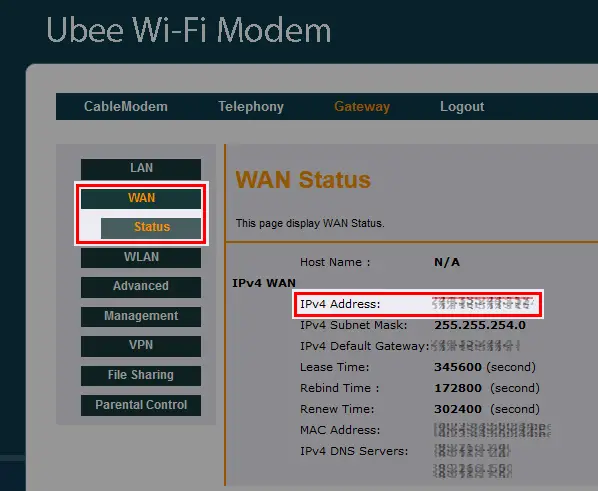
Enabling Web-Based Administrative Management
To connect to your home Wi-Fi remotely, you must enable remote access or remote web-based management from the control panel.
The remote web-based management setting is usually OFF by default to prevent unauthorized access by hackers.
You must activate the setting to connect to your home Wi-Fi remotely.
Here are the steps:
- Connect your PC to your home Wi-Fi
- Launch your favorite browser on your PC
- Enter the router’s private IP address in the URL bar
- Enter your login credentials to access the admin site
- Select Administration or Settings, or Security, or System Tools
- Navigate to System Configuration or Remote Web-based Management
- Click the checkbox to enable Remote Web-based Management

- Click OK or Save to apply changes
- Exit the admin site
Specifying the Router’s Port Value
Wi-Fi routers have several ports for wired connections, but only one port connects to the modem or internet source.
You must specify this port as it also serves as the entry point for remote web-based management.
Fortunately, specifying the router’s port for remote access is easy since all of them have assigned numbers.
The default port value for remote access is usually 8080 or 80.
When connecting to home Wi-Fi remotely, you must enter the router’s public IP address and port number in the URL bar of your preferred browser.
For instance, if your router’s public IP address is 120.135.55.20, you can connect to your home Wi-Fi remotely by entering 192.168.55.20:8080 in the URL bar.
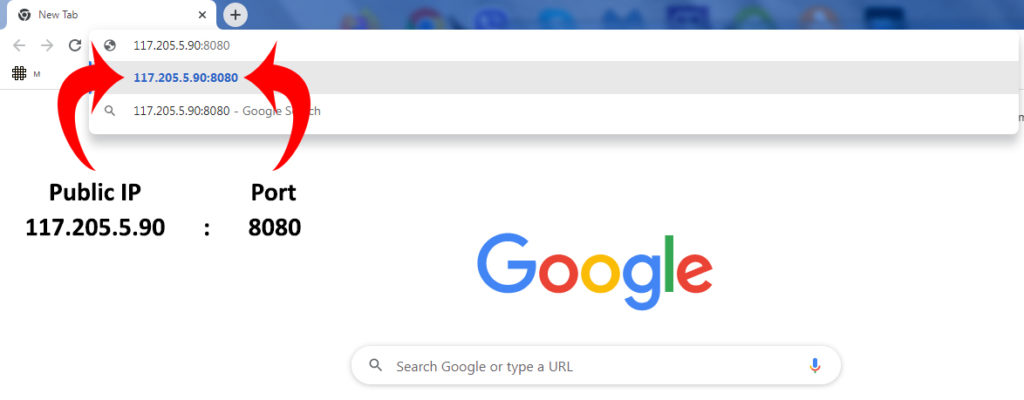
Setting Up Dynamic DNS
The public IP address assigned to your router by the internet service provider is dynamic for security reasons and it changes occasionally to protect your privacy.
It can also change when you reboot or reset your router and whenever your ISP pushes a firmware update.
Since the public IP address changes, you cannot use it to connect to your home Wi-Fi remotely unless you set up dynamic DNS.
Dynamic DNS Explained
Dynamic DNS is a service that creates a custom hostname, so you don’t have to worry about the constantly changing public IP address.
Dynamic DNS will map the custom hostname to the new address even if your public IP address changes, allowing for remote access.
The hostname links directly to your router’s public IP address, allowing you to remotely connect to your home Wi-Fi.
You can pay for the service or use the free options available on the internet.
Here’s how to set up dynamic DNS:
- Launch your preferred browser and enter the private IP address to access the admin site
- Enter your login credentials
- On the control panel page, go to Advanced
- Search for Dynamic DNS or DDNS
- Click the check box to activate Dynamic DNS
- Pick your preferred Dynamic DNS service provider
- Register with your preferred provider
- Create a custom hostname linked to your public IP address
- Copy the custom hostname and paste it into the router settings
- Click OK or Save
- Exit the control panel
How to Access Your Wi-Fi Network Remotely and Set Up a Dynamic DNS
Conclusion
Connecting remotely to your home Wi-Fi is an easy step-by-step procedure that allows you to change your connection status, reboot your router, back up configuration settings or even enforce parental controls when you are away.
Use the above guide to learn how to connect to home Wi-Fi remotely.

Hey, I’m Jeremy Clifford. I hold a bachelor’s degree in information systems, and I’m a certified network specialist. I worked for several internet providers in LA, San Francisco, Sacramento, and Seattle over the past 21 years.
I worked as a customer service operator, field technician, network engineer, and network specialist. During my career in networking, I’ve come across numerous modems, gateways, routers, and other networking hardware. I’ve installed network equipment, fixed it, designed and administrated networks, etc.
Networking is my passion, and I’m eager to share everything I know with you. On this website, you can read my modem and router reviews, as well as various how-to guides designed to help you solve your network problems. I want to liberate you from the fear that most users feel when they have to deal with modem and router settings.
My favorite free-time activities are gaming, movie-watching, and cooking. I also enjoy fishing, although I’m not good at it. What I’m good at is annoying David when we are fishing together. Apparently, you’re not supposed to talk or laugh while fishing – it scares the fishes.

